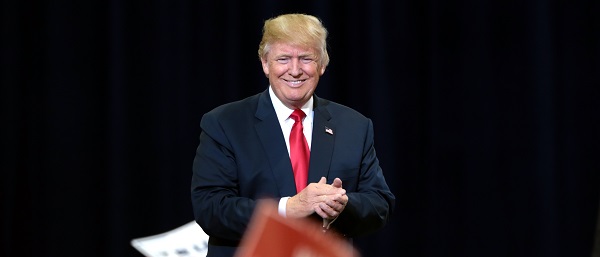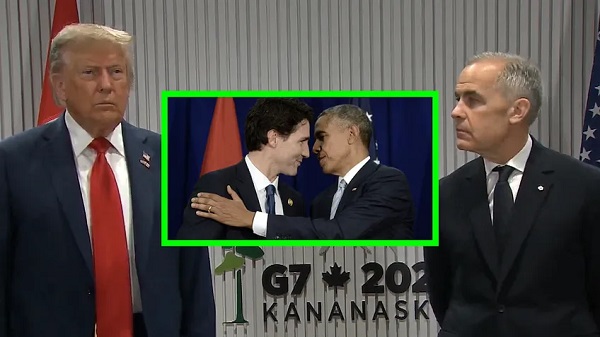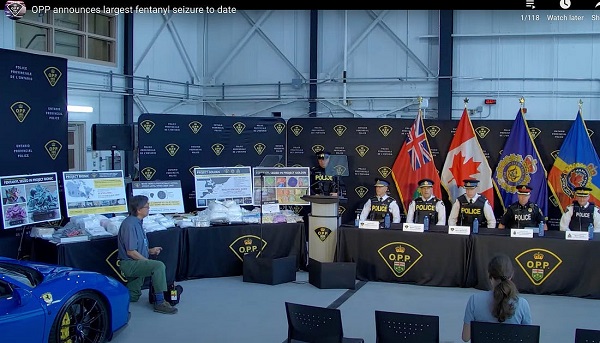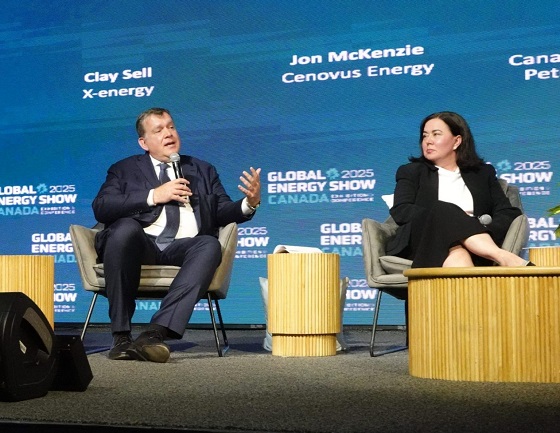Business
Companies Scrambling To Respond To Trump’s ‘Beautiful’ Tariff Hikes

 From the Daily Caller News Foundation
From the Daily Caller News Foundation
By Adam Pack
Companies are scrambling to respond to President-elect Donald Trump’s “beautiful” tariff proposals that his administration may seek to enact early in his second term.
Proactive steps that companies are taking to evade anticipated price increases include stockpiling inventory in U.S. warehouses and weighing whether they need to completely eliminate China from their supply chains and raise the price of imported goods affected by tariff hikes, whose costs will be passed onto consumers.
Free-trade skeptics are touting companies’ anticipatory actions as delivering a clear sign that Trump’s proposed tariff hikes are already achieving their intended effect of pressuring retailers to eliminate China from their supply chains. However, some policy experts are warning that higher tariffs will be a regressive tax for America’s lower and middle-income families and make inflation worse, according to retailers and economists who spoke to the Daily Caller News Foundation.
On the campaign trail, Trump proposed a universal tariff of up to 20% on all imports coming into the U.S. and a 60% or higher tariff on all imports from China. Trump is considering Robert Lighthizer, the former U.S. trade representative during his administration’s first term who is well-known for favoring high tariffs, to serve as his second administration’s trade czar, the Wall Street Journal first reported.
PRESIDENT TRUMP: "The word tariff to me is a very beautiful word because it can save our country, truly… I saved our steel industries by putting tariffs on steel that China came in and dumped… They had committees that were put in charge of what to do with the money. We were… pic.twitter.com/jj88zenMRP
— Trump War Room (@TrumpWarRoom) October 2, 2024
‘Mitigation Strategies To Lessen The Impact’
Companies are taking preemptive measures, such as stockpiling goods in U.S. warehouses, to work proactively against anticipated price increases that higher tariffs would inflict, Jonathan Gold, vice president of supply chains and customs policy for the National Retail Federation, told the DCNF during an interview.
“They’re looking at different mitigation strategies to lessen the impact that they might feel from the tariffs,” Gold told the DCNF. “One of those strategies is to start looking at potentially bringing in cargo, bringing products earlier to get ahead of potential tariffs that Trump might put in place.”
Importing goods into the U.S. ahead of schedule leads to additional costs for retailers that will likely be passed onto consumers, but waiting to import goods from China after a 60% or higher tariff on Chinese imports goes into effect would be substantially more expensive, according to Gold.
A recent NRF study projected that Trump’s proposed tariff hikes on consumer products would cost American consumers an additional $46 billion to $78 billion a year.
“A tariff is a tax paid by the U.S. importer, not a foreign country or the exporter,” Gold said in a press release accompanying the study. “This tax ultimately comes out of consumers’ pockets through higher prices.”
Decoupling From China
Part of the rationale behind Trump’s tariff proposals is to force manufacturing jobs to return to the United States and pressure companies to completely eliminate China from their supply chains, according to Mark DiPlacido, policy advisor at American Compass.
“I hope in addition to stockpiling, they’re also looking at actually moving their supply chains out of China and ideally back to the United States,” DiPlacido told the DCNF.
“For a long time, the framing has been what is best for just increasing trade flows, regardless of the direction those flows are going. What that’s resulted in for the last 25 years is a flow of manufacturing, a flow of factories and a flow of jobs, especially solid middle class jobs out of the United States and across the world,” DiPlacido added.
But completely shifting production outside of China is not feasible for some retailers even if companies have taken further steps to diversify their supply chain for the past decade, according to Gold.
“It takes a while to make those shifts and not everyone is able to do that, Gold acknowledged. “Nobody has the [production] capacity that China does. Trying to find that within multiple countries is a challenge. And it’s not just the capacity, but the skilled workforce as well.”
In addition, companies who move production out of China to avoid a 60% tariff on imported goods from the nation could still get hit by a 20% across the board tariff if they move their supply chain to countries other than the United States, Gold and several economists told the DCNF.
“They’re talking about tariffs on imports for which there’s not a domestic producer to switch to,” Clark Packard, a research fellow on trade policy at the CATO institute, told the DCNF in an interview. “For example, we don’t make coffee in the United States, so why are we going to impose a tariff on coffee?”
“Who are we trying to protect?” he added.
Some economists are also pessimistic that the president-elect’s planned tariff hikes will ultimately bring jobs that moved overseas to cheaper labor markets back to the United States.
“What we actually saw from the 2018-2019 trade war was a decrease in manufacturing output and employment because of the tariffs,” Erica York, senior economist and research director of the Tax Foundation’s Center for Federal Tax Policy, told the DCNF in an interview. “It played out just like every economist predicted: higher costs for U.S. consumers, reduced output, reduced incomes for American workers, foreign retaliation that’s harmful.”
The president-elect’s proposed tariff hikes could also eliminate more jobs than those saved or created as a result of protecting domestic industries, such as the U.S. steel or solar manufacturing industries, that may benefit from higher tariffs on foreign competitors, Packard told the DCNF.
“It’s disproportionate — the cost that is passed onto the broader economy to protect a very small slice of U.S. employment,” Packard said. Trump’s 25% tariff on imported steel enacted during his first administration slightly increased employment in the U.S. steel industry, but each job that was maintained or created came at a cost of roughly $650,000 that likely killed jobs in other sectors forced to buy more expensive steel, according to Packard.
‘Bipartisan Recognition’
Despite tariffs’ potential to force companies to raise the price of goods they import into the United States, DiPlacido defended Trump’s proposed tariff hikes as essential to eliminating U.S. dependence on China for a variety of strategic goods and consumer products.
“We need to be able to manufacture a broad range of goods in the United States. And we need the job security and the economic security that a strong manufacturing industrial base provides,” DiPlacido said. “That’s going to be important to any future conflict or emergency that the United States may have with China or with anyone else.”
DiPlacido, citing Trump’s dominant electoral performance, also believes Trump has the “mandate” to carry out the tariff proposals he floated during the campaign.
“There’s a sort of a bipartisan recognition of the problem. Even the Biden administration kept almost all of Trump’s tariffs in place,” DiPlacido told the DCNF. “I think he has the political mandate, and that’s often a harder thing to get.”
However, some economists are questioning whether the thousands of dollars of projected costs that American families would be forced to pay as a result of these tariff hikes could create political backlash that has so far failed to materialize against Trump and Biden’s relatively similar trade policies.
“Voters were rightly pretty upset about price increases and inflation,” Packard told the DCNF. “We’re talking about utilizing a tool in tariffs that will increase relative prices.”
“Tariffs as a whole are a regressive tax,” Gold told the DCNF. “They certainly hit low and middle income consumers the hardest.”
Retailers are forecasting a decrease in demand for consumer products as a result of Trump’s tariff proposals, according to Gold.
The incoming Senate Republican leader has also notably criticized Trump’s proposed tariff hikes.
“I get concerned when I hear we just want to uniformly impose a 10% or 20% tariff on everything that comes into the United States,” Republican South Dakota Sen. John Thune, Senate GOP leader, said in August during a panel on agriculture policy in his home state. “Generally, that’s a recipe for increased inflation.”
Business
Trump makes impact on G7 before he makes his exit

Trump Rips Into Obama and Trudeau at G7 for a “Very Big Mistake” on Russia
At the G7 in Canada, President Trump didn’t just speak—he delivered a headline-making indictment.
Standing alongside Canada’s Prime Minister, he directly blasted Barack Obama and Justin Trudeau, accusing them of committing a “very big mistake” by booting Russia out of the G8. He warned that this move didn’t deter conflict—it unleashed it, and he insists it paved the way for the war in Ukraine.
Before the working sessions began, the two leaders fielded questions. The first topic: the ongoing trade negotiations between the U.S. and Canada. Trump didn’t hesitate to point out that the issue wasn’t personal—it was philosophical.
“It’s not so much holding up. I think we have different concepts,” Trump said. “I have a tariff concept, Mark [Carney] has a different concept, which is something that some people like.”
He made it clear that he prefers a more straightforward approach. “I’ve always been a tariff person. It’s simple, it’s easy, it’s precise and it just goes very quickly.”
Carney, he added, favors a more intricate framework—“also very good,” Trump said. The goal now, according to Trump, is to examine both strategies and find a path forward. “We’re going to look at both and we’re going to come out with something hopefully.”
When asked whether a deal could be finalized in a matter of days or weeks, Trump didn’t overpromise, but he left the door open. “It’s achievable but both parties have to agree.”
Then the conversation took an unexpected turn.
Standing next to Canada’s Prime Minister, whose predecessor helped lead that push, Trump argued that isolating Moscow may have backfired. “The G7 used to be the G8,” he said, pointing to the moment Russia was kicked out.
He didn’t hold back. “Barack Obama and a person named Trudeau didn’t want to have Russia in, and I would say that was a mistake because I think you wouldn’t have a war right now if you had Russia in.”
This wasn’t just a jab at past leaders. Trump was drawing a direct line from that decision to the war in Ukraine. According to him, expelling Russia took away any real chance at diplomacy before things spiraled.
“They threw Russia out, which I claimed was a very big mistake even though I wasn’t in politics then, I was loud about it.” For Trump, diplomacy doesn’t mean agreement—it means keeping adversaries close enough to negotiate.
“It was a mistake in that you spent so much time talking about Russia, but he’s no longer at the table. It makes life more complicated. You wouldn’t have had the war.”
Then he made it personal. Trump compared two timelines—one with him in office, and one without. “You wouldn’t have a war right now if Trump were president four years ago,” he said. “But it didn’t work out that way.”
Before reporters could even process Trump’s comments on Russia, he shifted gears again—this time turning to Iran.
Asked whether there had been any signs that Tehran wanted to step back from confrontation, Trump didn’t hesitate. “Yeah,” he said. “They’d like to talk.”
The admission was short but revealing. For the first time publicly, Trump confirmed that Iran had signaled interest in easing tensions. But he made it clear they may have waited too long.
“They should have done that before,” he said, referencing a missed 60-day negotiation window. “On the 61st day I said we don’t have a deal.”
Even so, he acknowledged that both sides remain under pressure. “They have to make a deal and it’s painful for both parties but I would say Iran is not winning this war.”
Then came the warning, delivered with unmistakable urgency. “They should talk and they should talk IMMEDIATELY before it’s too late.”
Eventually, the conversation turned back to domestic issues: specifically, immigration and crime.
He confirmed he’s directing ICE to focus its efforts on sanctuary cities, which he accused of protecting violent criminals for political purposes.
He pointed directly at major Democrat-led cities, saying the worst problems are concentrated in deep blue urban centers. “I look at New York, I look at Chicago. I mean you got a really bad governor in Chicago and a bad mayor, but the governor is probably the worst in the country, Pritzker.”
And he didn’t stop there. “I look at how that city has been overrun by criminals and New York and L.A., look at L.A. Those people weren’t from L.A. They weren’t from California most of those people. Many of those people.”
According to Trump, the crime surge isn’t just a local failure—it’s a direct consequence of what he called a border catastrophe under President Biden. “Biden allowed 21 million people to come into our country. Of that, vast numbers of those people were murderers, killers, people from gangs, people from jails. They emptied their jails into the U.S. Most of those people are in the cities.”
“All blue cities. All Democrat-run cities.”
He closed with a vow—one aimed squarely at the ballot box. Trump said he’ll do everything in his power to stop Democrats from using illegal immigration to influence elections.
“They think they’re going to use them to vote. It’s not going to happen.”
Just as the press corps seemed ready for more, Prime Minister Carney stepped in.
The momentum had clearly shifted toward Trump, and Carney recognized it. With a calm smile and hands slightly raised, he moved to wrap things up.
“If you don’t mind, I’m going to exercise my role, if you will, as the G7 Chair,” he said. “Since we have a few more minutes with the president and his team. And then we actually have to start the meeting to address these big issues, so…”
Trump didn’t object. He didn’t have to.
By then, the damage (or the impact) had already been done. He had steered the conversation, dropped one headline after another, and reshaped the narrative before the summit even began.
By the time Carney tried to regain control, it was already too late.
Wherever Trump goes, he doesn’t just attend the event—he becomes the event.
Thanks for reading! This post took time and care to put together, and we did our best to give this story the coverage it deserved.
If you like my work and want to support me and my team and help keep this page going strong, the most powerful thing you can do is sign up for the email list and become a paid subscriber.
Your monthly subscription goes further than you think. Thank you so much for your support.
This story was made possible with the help of Overton —I couldn’t have done it without him.
If you’d like to support his growing network, consider subscribing for the month or the year. Your support helps him expand his team and cover more stories like this one.
We both truly appreciate your support!
Business
The CBC is a government-funded giant no one watches

This article supplied by Troy Media.
 By Kris Sims
By Kris Sims
The CBC is draining taxpayer money while Canadians tune out. It’s time to stop funding a media giant that’s become a political pawn
The CBC is a taxpayer-funded failure, and it’s time to pull the plug. Yet during the election campaign, Prime Minister Mark Carney pledged to pump another $150 million into the broadcaster, even as the CBC was covering his campaign. That’s a blatant conflict of interest, and it underlines why government-funded journalism must end.
The CBC even reported on that announcement, running a headline calling itself “underfunded.” Think about that. Imagine being a CBC employee asking Carney questions at a campaign news conference, while knowing that if he wins, your employer gets a bigger cheque. Meanwhile, Conservative Leader Pierre Poilievre has pledged to defund the CBC. The broadcaster is literally covering a story that determines its future funding—and pretending there’s no conflict.
This kind of entanglement isn’t journalism. It’s political theatre. When reporters’ paycheques depend on who wins the election, public trust is shattered.
And the rot goes even deeper. In the Throne Speech, the Carney government vowed to “protect the institutions that bring these cultures and this identity to the world, like CBC/RadioCanada.” Before the election, a federal report recommended nearly doubling the CBC’s annual funding. Former heritage minister Pascale St-Onge said Canada should match the G7 average of $62 per person per year—a move that would balloon the CBC’s budget to $2.5 billion annually. That would nearly double the CBC’s current public funding, which already exceeds $1.2 billion per year.
To put that in perspective, $2.5 billion could cover the annual grocery bill for more than 150,000 Canadian families. But Ottawa wants to shovel more cash at an organization most Canadians don’t even watch.
St-Onge also proposed expanding the CBC’s mandate to “fight disinformation,” suggesting it should play a formal role in “helping the Canadian population understand fact-based information.” The federal government says this is about countering false or misleading information online—so-called “disinformation.” But the Carney platform took it further, pledging to “fully equip” the CBC to combat disinformation so Canadians “have a news source
they know they can trust.”
That raises troubling questions. Will the CBC become an official state fact-checker? Who decides what qualifies as “disinformation”? This isn’t about journalism anymore—it’s about control.
Meanwhile, accountability is nonexistent. Despite years of public backlash over lavish executive compensation, the CBC hasn’t cleaned up its act. Former CEO Catherine Tait earned nearly half a million dollars annually. Her successor, Marie Philippe Bouchard, will rake in up to $562,700. Bonuses were scrapped after criticism—but base salaries were quietly hiked instead. Canadians struggling with inflation and rising costs are footing the bill for bloated executive pay at a broadcaster few of them even watch.
The CBC’s flagship English-language prime-time news show draws just 1.8 per cent of available viewers. That means more than 98 per cent of TV-viewing Canadians are tuning out. The public isn’t buying what the CBC is selling—but they’re being forced to pay for it anyway.
Government-funded journalism is a conflict of interest by design. The CBC is expensive, unpopular, and unaccountable. It doesn’t need more money. It needs to stand on its own—or not at all.
Kris Sims is the Alberta Director for the Canadian Taxpayers Federation
Troy Media empowers Canadian community news outlets by providing independent, insightful analysis and commentary. Our mission is to support local media in helping Canadians stay informed and engaged by delivering reliable content that strengthens community connections and deepens understanding across the country.
-

 Health1 day ago
Health1 day agoLast day and last chance to win this dream home! Support the 2025 Red Deer Hospital Lottery before midnight!
-

 Aristotle Foundation1 day ago
Aristotle Foundation1 day agoThe Canadian Medical Association’s inexplicable stance on pediatric gender medicine
-

 conflict2 days ago
conflict2 days ago“Evacuate”: Netanyahu Warns Tehran as Israel Expands Strikes on Iran’s Military Command
-

 Energy2 days ago
Energy2 days agoCould the G7 Summit in Alberta be a historic moment for Canadian energy?
-

 Bruce Dowbiggin2 days ago
Bruce Dowbiggin2 days agoWOKE NBA Stars Seems Natural For CDN Advertisers. Why Won’t They Bite?
-

 Crime2 days ago
Crime2 days agoMinnesota shooter arrested after 48-hour manhunt
-

 Alberta1 day ago
Alberta1 day agoAlberta announces citizens will have to pay for their COVID shots
-

 Uncategorized1 day ago
Uncategorized1 day agoKananaskis G7 meeting the right setting for U.S. and Canada to reassert energy ties











